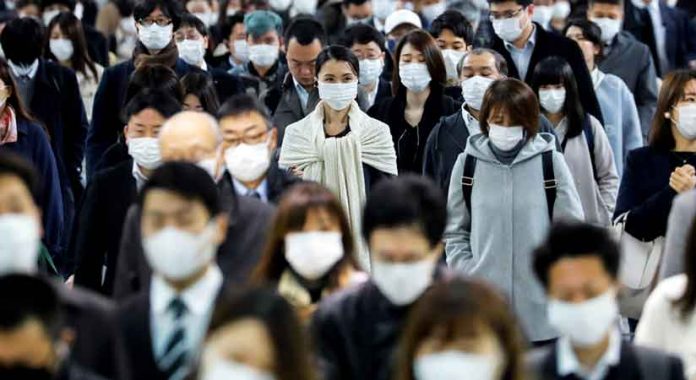DIFFERENCES between Japan’s most recent coronavirus surge and a wave subdued in the summer are giving lawmakers pause, and forcing experts to adjust their strategies as the country enters winter with a population that’s been counted as the most vulnerable in the world.
At first glance, the wave of cases since the start of November appears similar to the summer jump, which was brought under control with only minor tweaks in policy. But authorities this time are calling to prepare for a “worst-case scenario” as serious cases rise well past the summer peak to a record.
“We have a sense of urgency over the fact that the number of serious cases has risen to almost 500,” Health Minister Norihisa Tamura said Tuesday. The increase is sending authorities scrambling to ensure there are enough beds and medical practitioners to staff them.
Japan’s current outbreak is chiefly focused on four areas with major metropolitan populations: the city of Sapporo in the northern island of Hokkaido, which was the first place to see the cases surge both in the current outbreak and the initial wave in February; Aichi, the industrial heartland home to Toyota Motor Corp.; the commercial homeland of Osaka; and the capital Tokyo.
In many of those regions, beds for the most serious cases are already running low. With Tokyo nearing 50% capacity, the Tokyo Metropolitan Government will ask hospitals to add another 50 beds for serious cases, NHK reported on Tuesday. That would bring the total to 200. Bed usage dipped on Tuesday, with the city reporting five deaths.
(The definition of a “serious case” differs from region to region: Tokyo defines it as those needing a ventilator or ECMO machine, while the national definition also includes those in an ICU.)
The cause behind the rise in serious cases is no mystery — increasing numbers of older people, who are at greater risk, are getting coronavirus disease 2019 (COVID-19) this time around, compared to the summer wave.
The trend is particularly pronounced in Tokyo, where younger people made up a much larger proportion of cases during the summer, helping to ease the impact on the health system.
With overall infections in Japan reaching 2,000 a day, authorities across the country have called for a three-week period of concentrated efforts against the virus. In each of the four metropolitan areas, bars and restaurants have been asked to close early.
“The next three weeks are an extremely important period,” Prime Minister Yoshihide Suga told reporters on Friday. “Together we must overcome this increase in cases.”
There are some encouraging signs. Cases in Tokyo last week were essentially flat compared with the previous seven days. Other areas including Hokkaido are starting to see curves flatten, if not decline, leading to hope that the current wave may have peaked.
Despite concerns that the public may have “pandemic fatigue,” mobility data indicate the calls for bars to close early is having the intended impact of reducing movement in nighttime entertainment districts.
Even so, Japan must prepare for more deaths ahead. More than half of the country’s over 2,000 coronavirus deaths have come from those 80 or older — an age group with a 14% fatality rate, according to health ministry data. Japan, with the world’s grayest population, has more than 11.6 million people in that bracket. — Bloomberg

